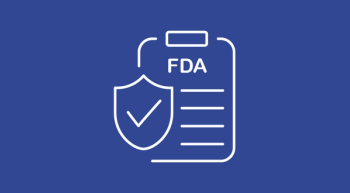
Not Just Doctor's Helpers: NPs and PAs Are Leaders in Cancer Care
A recent study found that in some parts of the United States, more patients with cancer are treated by nurse practitioners than medical oncologists.
When people picture the leaders of their cancer care, many may first think of oncologists or physicians. However, according to a recent study published in the Journal of the American Geriatrics Society, nurse practitioners actually comprised the largest group of providers for Medicare beneficiaries who received ambulatory care for any solid or hematologic malignancy.
Exploring the Prevalence of NP and PAs in Cancer Care
The researchers analyzed a total of 201,237 patients with 15,227 providers linked to their claims. A total of 4,806 patients (31.5%) were treated with nurse practitioners (NPs); 4,222 (27.7%) were treated by hematology/oncology physicians; 3,767 (24.7%) were treated by physician assistants (PAs); 661 (10.9%) were treated by medical oncologists; and the rest were treated by gynecological oncologists and hematologists.
“I think within individual academic settings, the physician workforce is very aware of NP and PA contributions. But the patients and larger policy base is not,” said study author Lorinda A. Coombs, PhD, FNP-BC, AOCNT, NIH Postdoctoral T32 Research Fellow from the University of Utah, in an interview with Oncology Nursing News.
Coombs emphasized that when talking to oncologists, surgeons, and other physicians, they are very aware of the instrumental roles that NPs and PAs play in cancer care. However, the patients themselves may not be, and may actually assume that their NP or PA is a doctor or is being directed by a physician.
“They just assume that the physician is directing these providers. They don’t realize that the NP and PA are actually making clinical decisions regarding their care,” Coombs said.
Cancer Care by Geographic Region
Further, patients who lived in rural areas were more likely to be treated by NPs or PAs, and those in the South were more likely to receive care from NPs. Across the United States, NPs were the most common providers in the South and West. Patients living in the Northeast were most commonly treated by hematologists/oncologists, and those from the Midwest were treated mostly by PAs.
This is likely due to the fact that most National Cancer Institute (NCI)-designated cancer centers tend to be on the coast or in/near large cities. Physicians may be trained at those centers and want to stay there for the duration of their career, according to Coombs. That leaves NPs and PAs to be a larger part of the care system in more isolated areas.
NPs and PAs Decrease Cancer Costs
“In Southern and rural areas, NPs and PAs are stepping in to fill the gaps in primary care, and they’re stepping in to fill the gap also in specialty care and oncology,” Coombs said. “They’re responding to a need that’s there. These are patients with cancer who can’t drive for hours, and don’t have the financial resources to go to the closest NCI-designated cancer center.”
In that way, being seen by a local NP or PA can directly save the patient money, considering that they can be treated by a highly trained professional without taking on overwhelming travel expenses. NP/PA-led cancer care can also decrease costs on the provider end, too, while also benefitting the world of research.
“It’s much less expensive to higher 4 NPs and PAs than to hire 1 to 2 oncologists,” Coombs said. “In order to stay afloat financially, I think physicians in the private practice setting have turned to NPs and PAs. And in the academic setting, it’s kind of about the limits on resident work hours. So, for different reasons, you see a tremendous growth in NP and PA workforce and their contributions across malignancies and settings.”
NPs and PAs are Here to Stay
The incidence of many different types of cancers continues to rise in the United States, with more people surviving long after their diagnoses, too, outlining a growing need for oncology care providers in years to come.
“We have to really have our eyes on the horizon because the need for cancer care is going to grow dramatically,” Coombs said. “The workforce is underpowered to care for them. So how can we all practice at the top of our license and really put the patient at the center of care that we’re thinking about?”
Coombs emphasized that NPs and PAs can be leaders in cancer care and are not just extensions or “helpers” to oncologists.
“The purpose of all of us [providers] is the patient. That is why we are here — to care for the person in front of us who has cancer and is asking for our help and needs our support in whatever way we’ve been trained,” Coombs said.
Read more:
Newsletter
Knowledge is power. Don’t miss the most recent breakthroughs in cancer care.
















































































